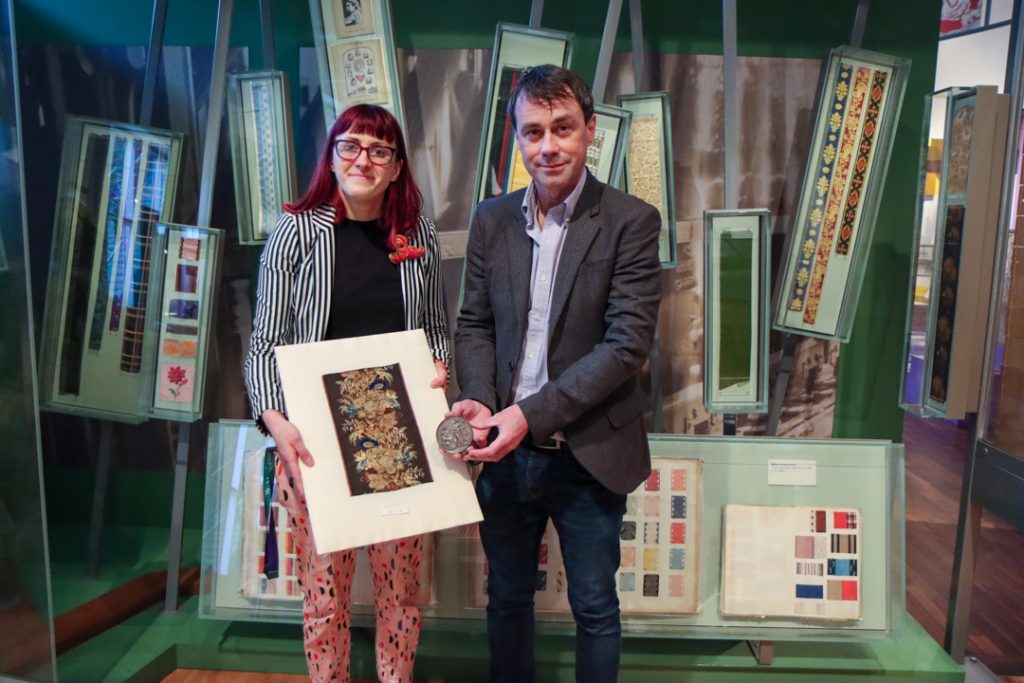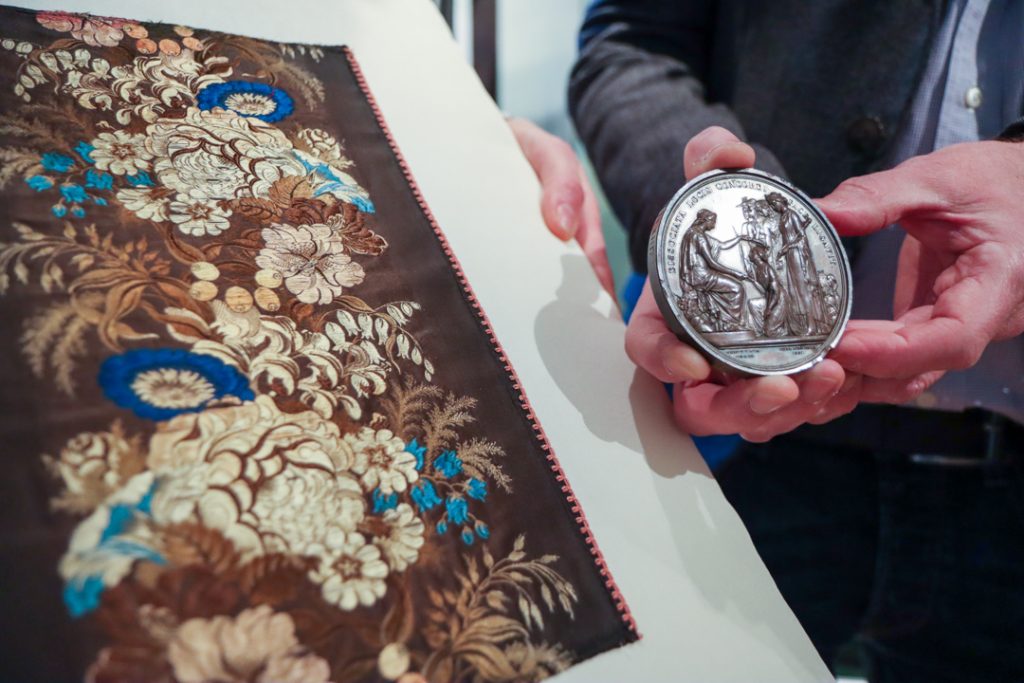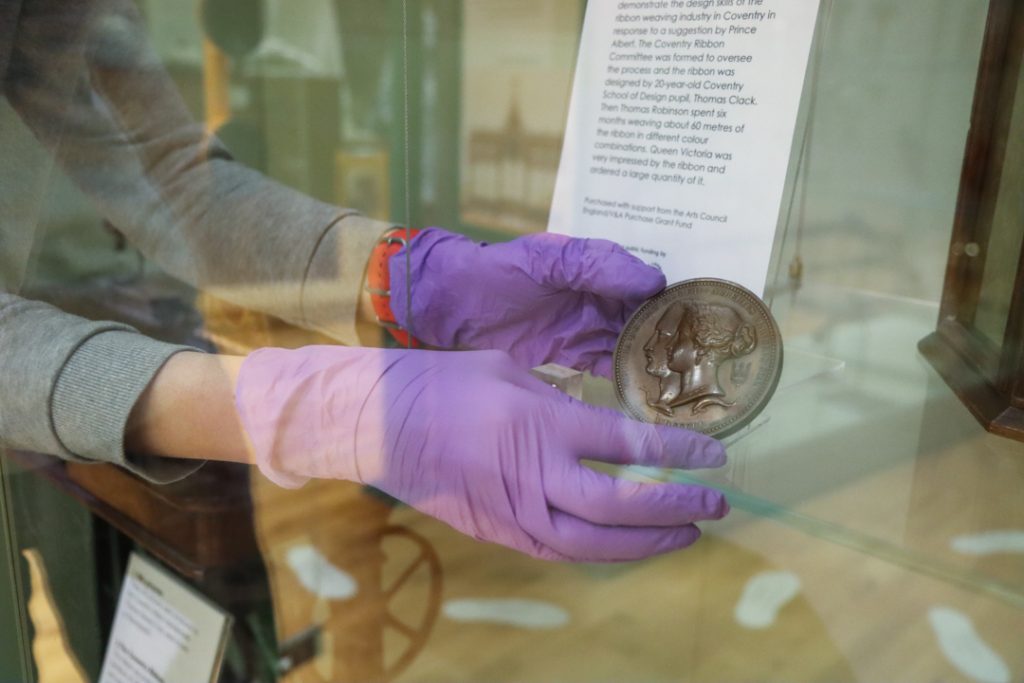The Herbert has bought the ‘Great Exhibition Prize Medal’
A unique part of Coventry’s past has been purchased by the Herbert Art Gallery & Museum and will go on display in its History Gallery.
The Herbert has bought the ‘Great Exhibition Prize Medal’ which was awarded to the Coventry Ribbon Committee for the Coventry Town Ribbon in the 1800s
The ribbon was woven especially for the 1851 Great Exhibition and the bronze medal was awarded to recognise its quality.
Queen Victoria was so impressed with the ribbon that she ordered a large quantity of it and the Herbert now holds several lengths of it.
Herbert Curator Ali Wells said: “Visitors can now enjoy the bronze medal in the Herbert’s History Gallery, near to a piece of the intricate ribbon it was awarded for.
“The Coventry Town Ribbon was woven specially for the 1851 Great Exhibition and its story is perhaps the pinnacle of Coventry’s ribbon weaving history.”
In 1849, Prince Albert visited Coventry inviting the town to prove that it was the leading centre for ribbon manufacture.
The project was driven forward by ribbon manufacturer Charles Bray, freethinker, radical and a close friend of author George Eliot.
A committee was formed and the brief to design a ribbon for the Great Exhibition was given to the Coventry School of Design. The ribbon was designed by 20-year-old pupil Thomas Clack and woven by Thomas Robinson on a Jacquard mechanism mounted on a single hand loom.
Ali added: “This was an unusual mechanical combination created to accommodate the complexity of design and width of the ribbon. The pattern required more than 10,000 cards and nine shuttles with various coloured silks being used.”
Around 60 to 70 yards of the Coventry Town Ribbon were produced in the six months leading up to the Great Exhibition where it was awarded a prize medal ‘for a ribbon exhibiting much taste and skill in its production’.
The Exhibition Juries awarded prize medals ‘Wherever a certain standard in excellence production or workmanship had been attained- utility, beauty, cheapness, adaptation to particular markets, and other areas of merit’.
The prize medals were struck in bronze, the metal considered most appropriate for the development of superior skill and ingenuity in medallic art. This reflected the Great Exhibition’s mission of promoting British manufacturing through encouraging excellence in industrial design and developing public taste.
The purchase has been made possible due to the kind support from Arts Council England and V&A Purchase Grant Fund.




